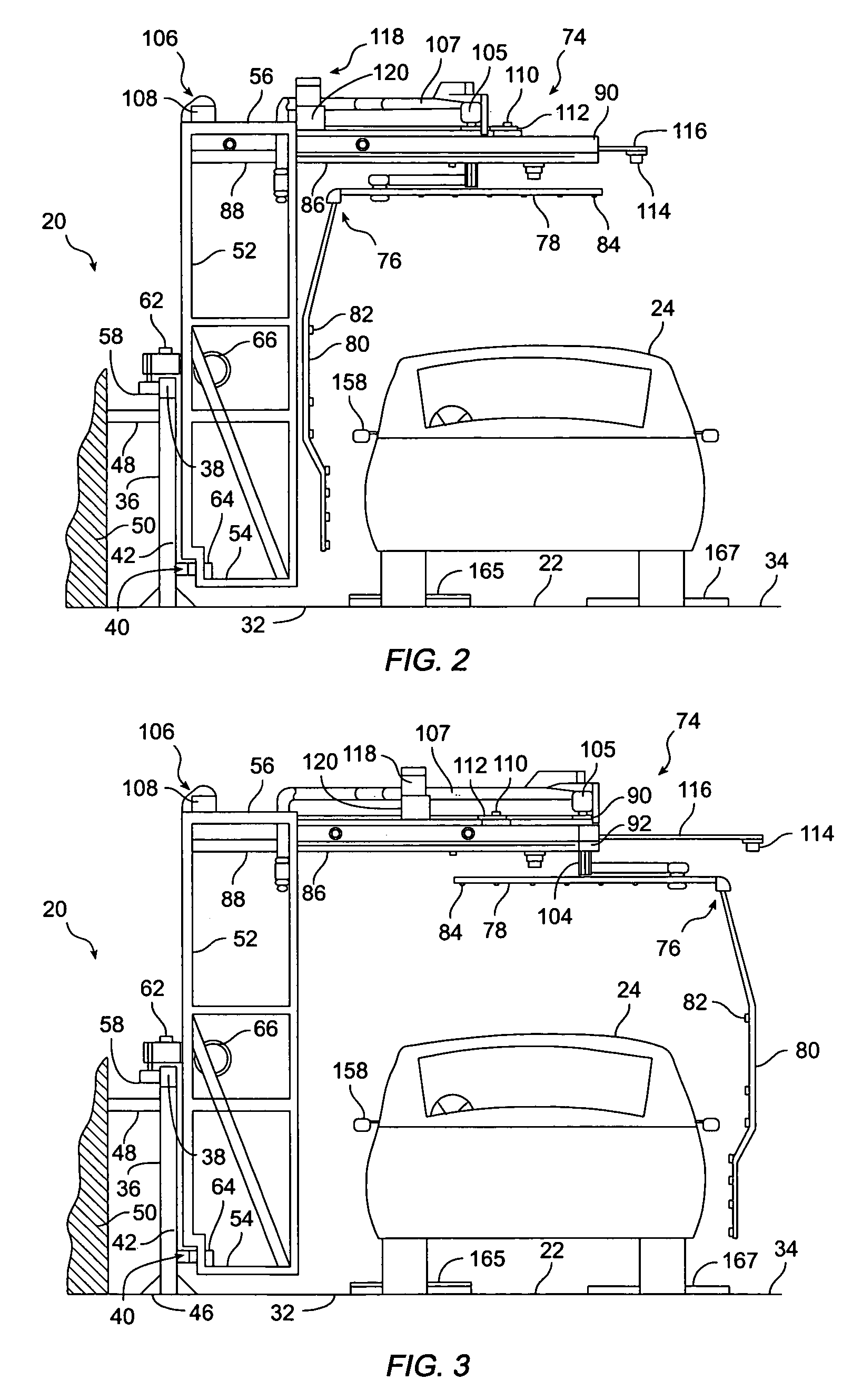Sidetrack vehicle washer with rotating spray arm
a technology for washing machines and sidetrack vehicles, which is applied in the direction of vehicle exterior cleaning apparatus, cleaning process and equipment, and cleaning apparatus, etc. it can solve the problems of sprayed cleaning fluid dispersing too much before reaching the vehicle surface, requiring a large amount of floor space, and requiring a large amount of space. , to achieve the effect of accurately indicating the position and lessening the risk of catching the washing
- Summary
- Abstract
- Description
- Claims
- Application Information
AI Technical Summary
Benefits of technology
Problems solved by technology
Method used
Image
Examples
Embodiment Construction
[0044]A vehicle washing apparatus incorporating a preferred embodiment of the present invention is shown in FIGS. 1–3, and is designated generally by reference numeral 20. Vehicle washer 20 includes a vehicle washing bay 22 for accommodating a vehicle 24 to be washed.
[0045]Washing bay 22 extends along a longitudinal axis (indicated by dashed line 26 in FIG. 1) between a rear end 28 and an opposing front end 30. Laterally, washing bay 22 extends between a left, or driver's side, 32 and an opposing right side 34. While not shown, washing bay 22 also has a lateral axis extending between left side 32 and right side 34 of washing bay 22, perpendicular to longitudinal axis 26.
[0046]A side track 36 extends along left side 32 of washing bay 22. While side track 36 is shown in the drawings as extending along left side 32, side track 36 could alternatively be installed to extend along right side 34 of washing bay 22. In either case, side track 36 need be installed along only one side of washi...
PUM
 Login to View More
Login to View More Abstract
Description
Claims
Application Information
 Login to View More
Login to View More - R&D
- Intellectual Property
- Life Sciences
- Materials
- Tech Scout
- Unparalleled Data Quality
- Higher Quality Content
- 60% Fewer Hallucinations
Browse by: Latest US Patents, China's latest patents, Technical Efficacy Thesaurus, Application Domain, Technology Topic, Popular Technical Reports.
© 2025 PatSnap. All rights reserved.Legal|Privacy policy|Modern Slavery Act Transparency Statement|Sitemap|About US| Contact US: help@patsnap.com



